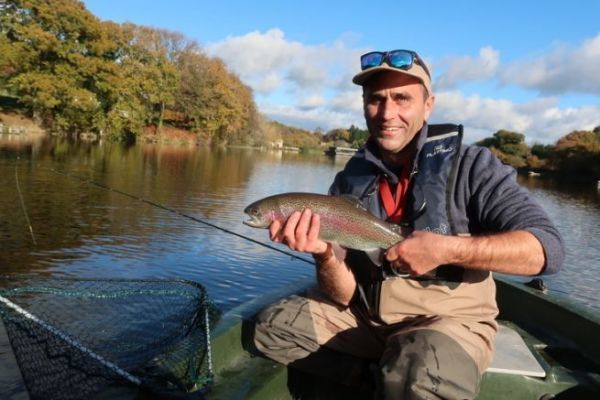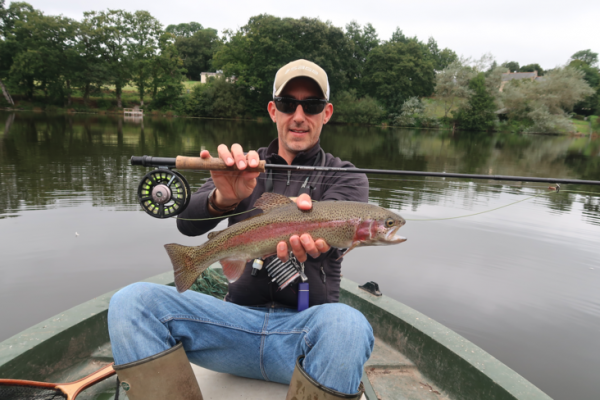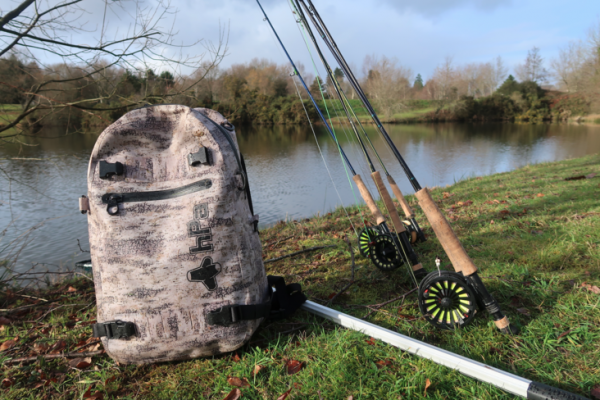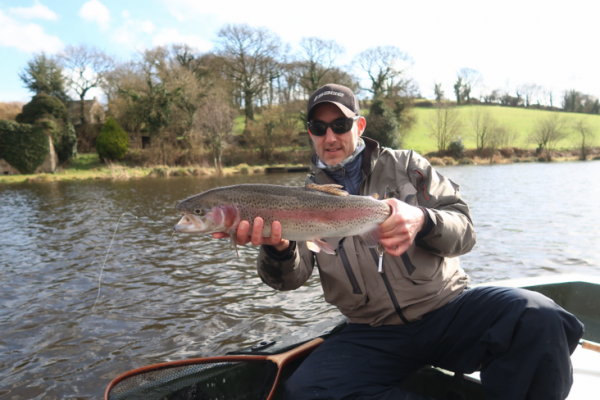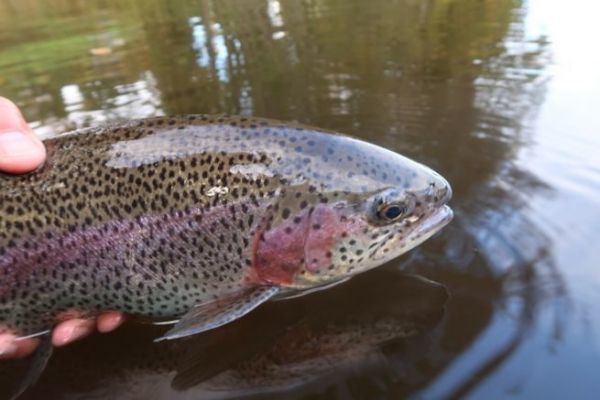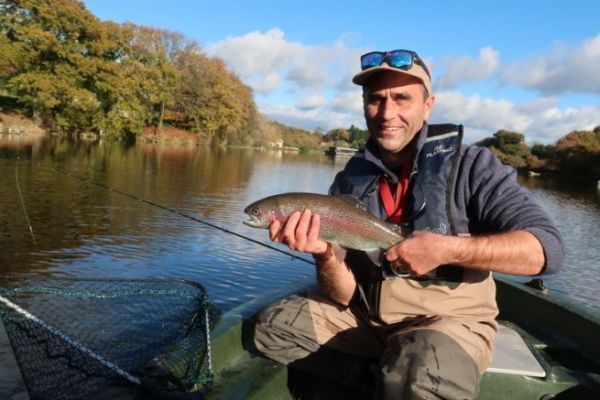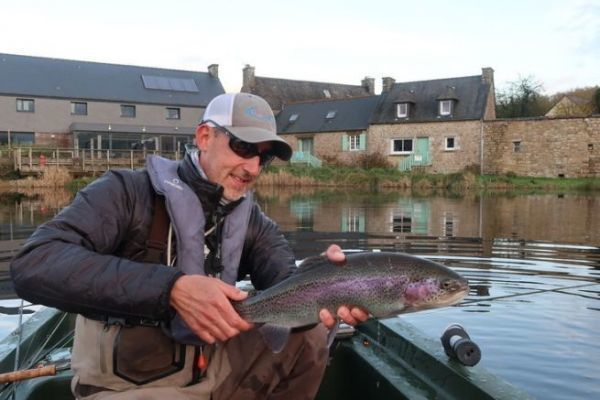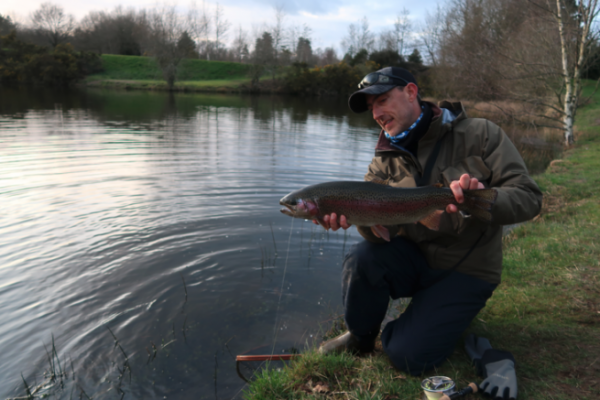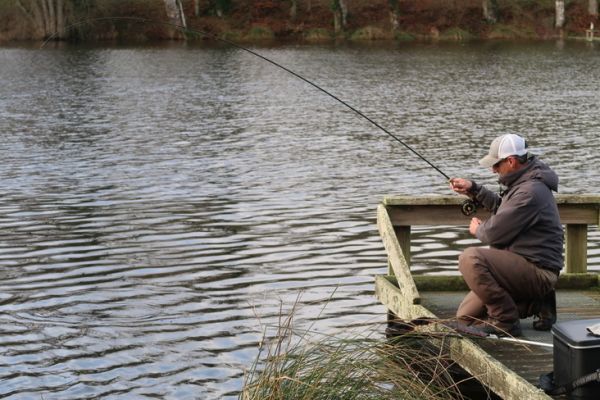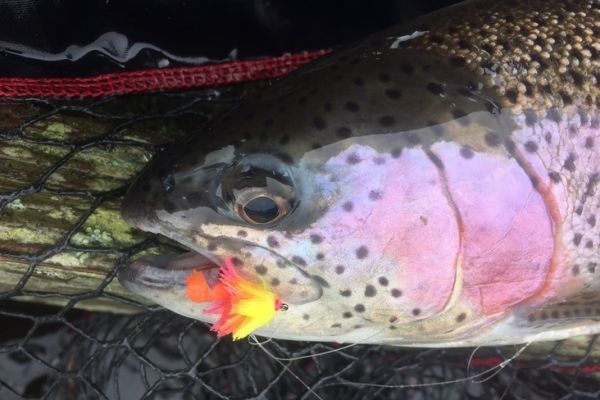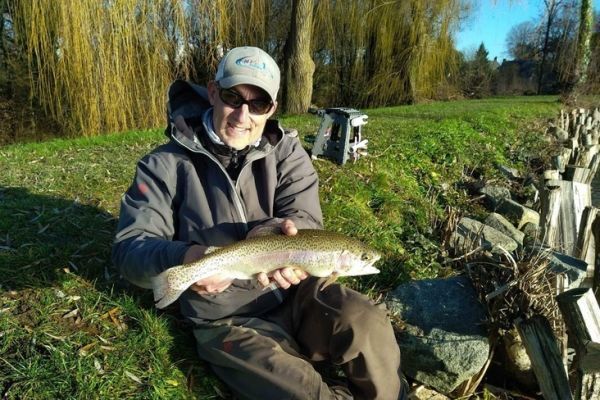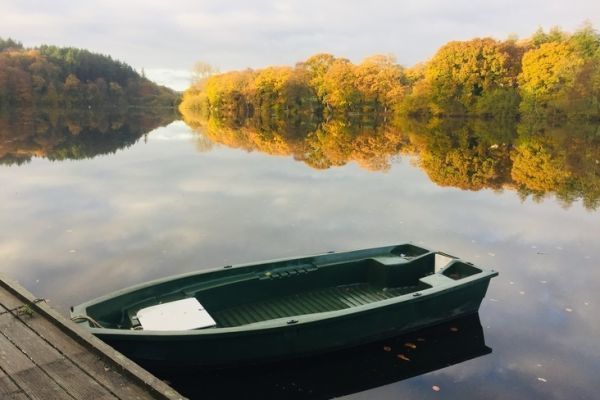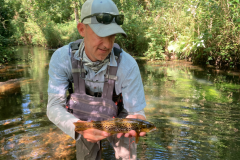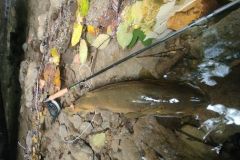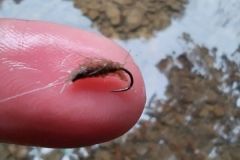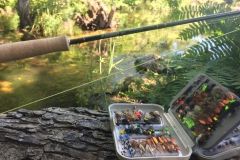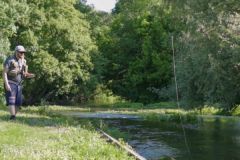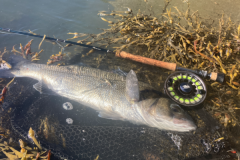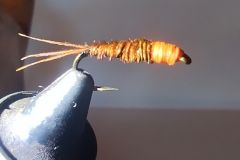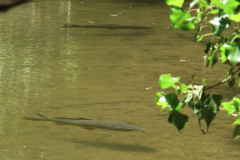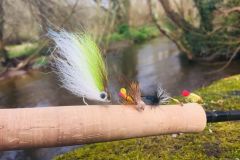What is a streamer?
A streamer is a decoy fly that mimics an underwater animal, such as fish, leeches, large larvae (e.g. dragonflies) or amphibians.
There are imitative streamers, which will represent a potential prey, present in the lake (also river) and incentive streamers, which will trigger the touch more by aggressiveness.
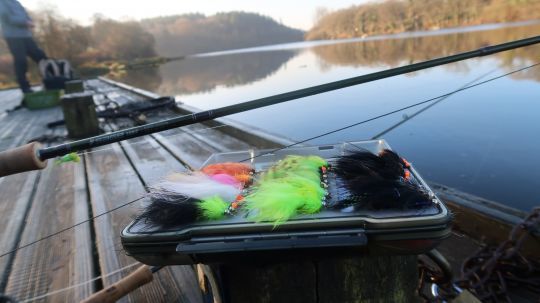
In fishing action, what does it look like?
A streamer can be used with all possible densities of lures, from floating to very deep, depending on the activity of the fish and especially on the water temperature which varies according to the external conditions and the depth.
The colors are as diverse as they are varied and depend on the creativity of the editor and his desires. The possibilities are endless.
The animation of a streamer can be done in all possible ways. From the simple strip or pull, more or less long and more or less fast (to very slow or very fast), knitting, "stop and go" or even rolly-polly * . The pauses will also be important to bring the fly down or leave it between two waters, and break the imitation's swim.
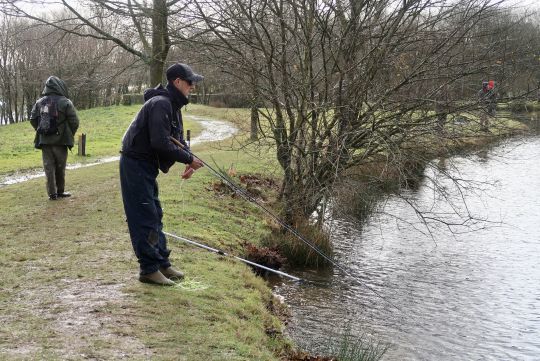
The streamer, the most used fishing method
When we talk about fishing in reservoirs, we immediately think of streamer fishing. It is the technique mostly used in reservoirs in France. Sometimes wrongly!
Indeed, if it allows to fish all the water layers of a lake and to prospect quickly, it is not the only technique to use when fishing in reservoir. It is of course necessary to analyze the conditions and the behavior of the fish in order to adapt and fish "just right".
If the fish are gobbling insects on the surface, the streamer will not interest the trout active and fixed on the hatch. If the fish are stuck to the bottom and lethargic, the streamer may not be the most suitable technique either. On the other hand, if the trout are freshly introduced, the colored streamers will be very productive.
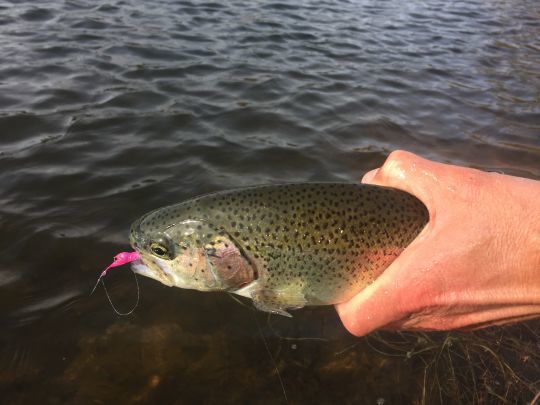
Adapting your equipment and technique to find the fish
As with all fishing, you'll need to adopt a strategy to find out what the fish are interested in. Ask yourself the right questions.
Streamer fishing can be very productive, but some days it's just the opposite. If there are no marauding fish, or active fish on the surface and sub-surface, the streamer can be one of the keys to success.
You will then have to find the water height in which the fish move and are active. So use the right density of silk and/or weighting of the fly. Then find the colors that appeal to that day. Natural colors, flashy, dark? Then, once your fly interests the fish, find the animation that will trigger the most hits. It can also vary as the day goes on.
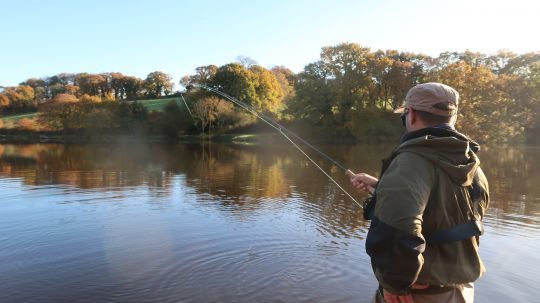
In summary
It is therefore necessary to constantly adapt and change color, density of silk and type of animation to catch trout throughout the day.
Ideally, being in possession of several rods, allows you to quickly change line density and/or fly patterns.
Do not hesitate to fish with two or three flies (if it is allowed in the reservoir where you fish) to quickly find a color or even a water height, by spacing your imitations.
Observe what is going on, and also the other fishermen present. Where are they fishing? With what technique? Go and talk to them. They are usually as passionate as you are about what they are doing.
In no case, stay on the same pattern and fish only with streamer all day.
Reservoir fishing is composed of many techniques that you must know and know how to use wisely to catch the fish that are in front of you, in the lake or body of water where you have paid a daily fishing fee.
*rolly-polly: bring back the line with both hands while holding the rod under the armpit and the forearm. This technique allows either to go very fast or to animate at a regular speed.

 /
/ 